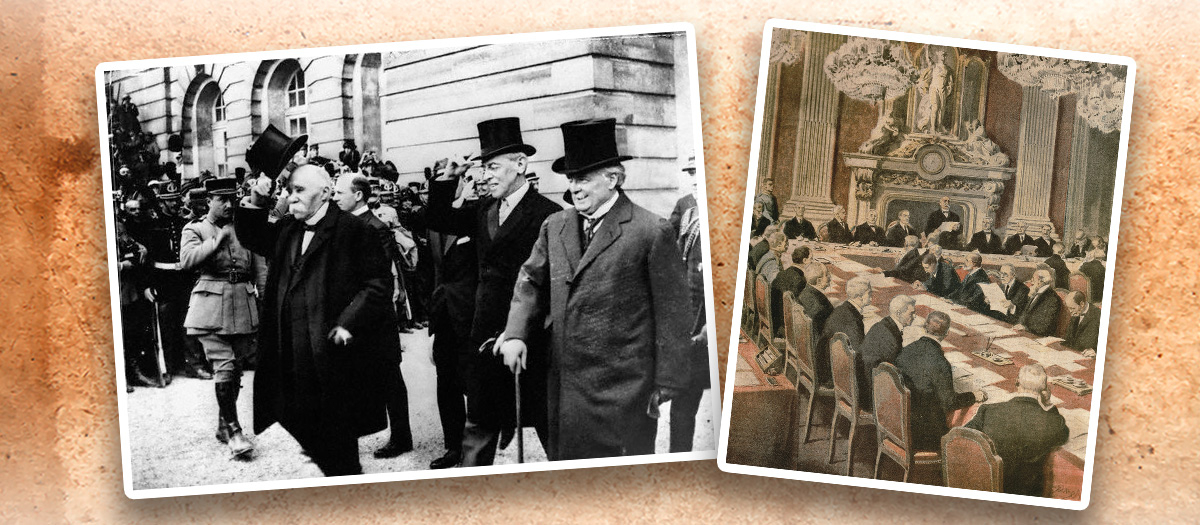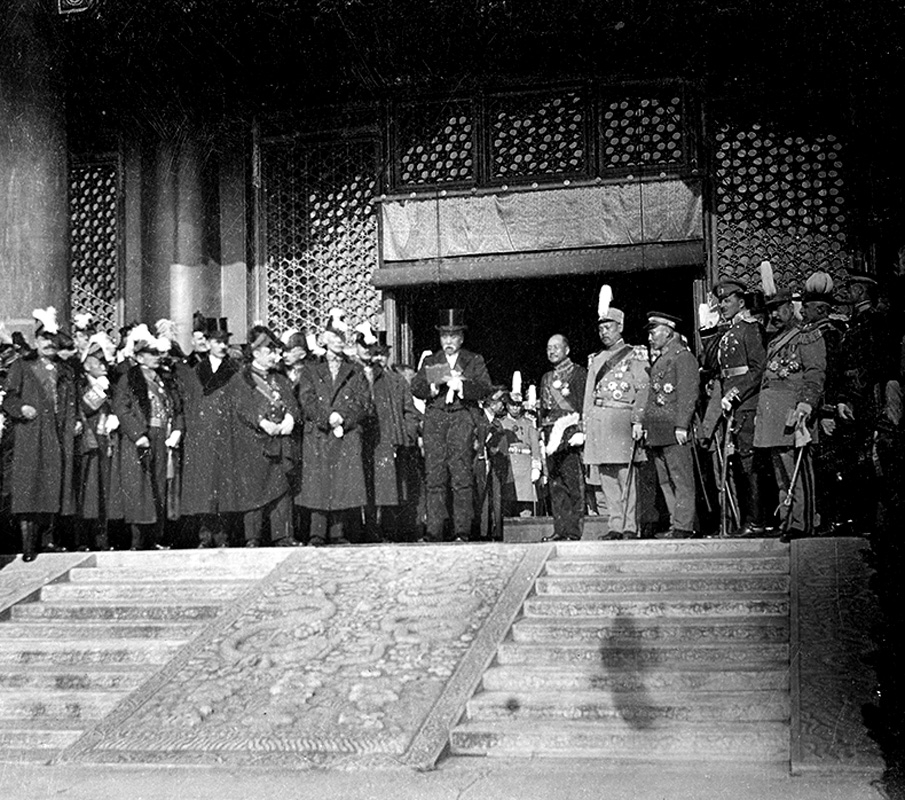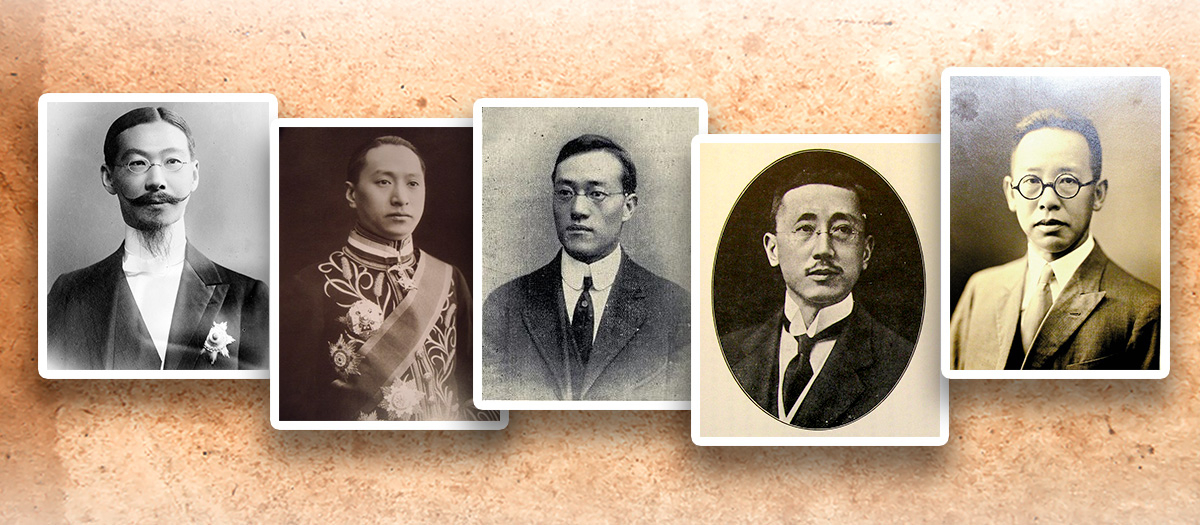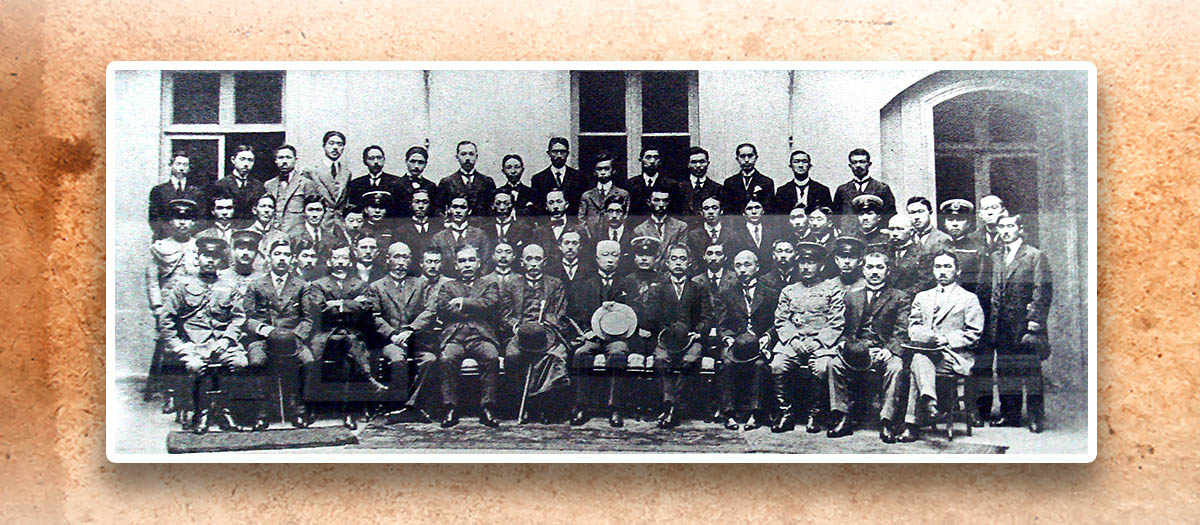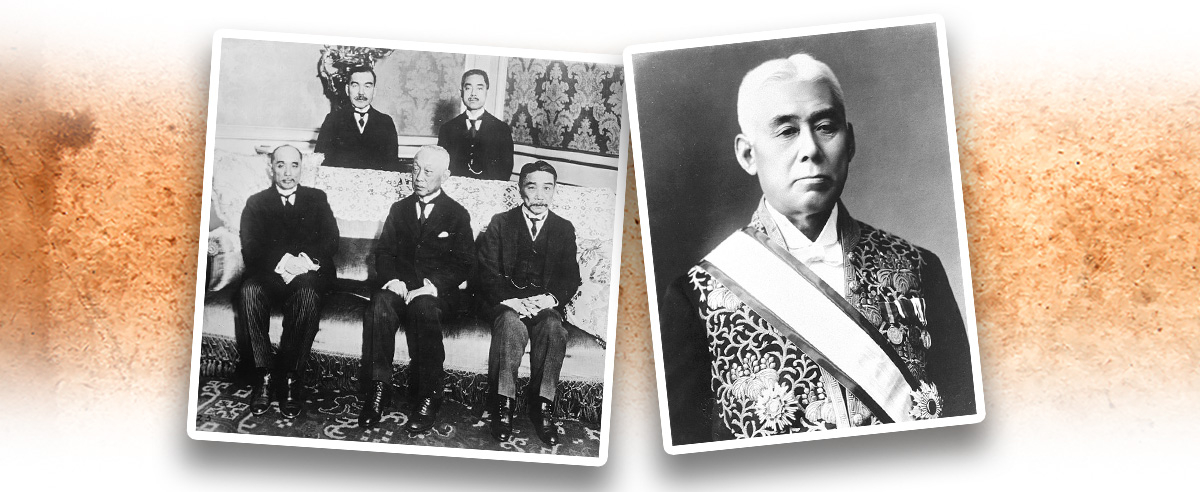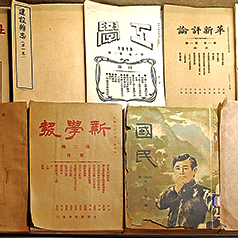The May Fourth Movement (五四運動) and the New Culture Movement (新文化運動) emerged from the same historical background, but differed in how they arose, what they stood for and the developments that followed. The May Fourth Movement was triggered by the fledging Republic’s diplomatic failure, made evident when the imperialist powers treated China unfairly in favor of Japan regarding the Shandong Problem (山東問題) at the Paris Peace Conference.
After the First Sino-Japanese War, Japan remained bent on subjugating China: in August 1914, Japan took the opportunity to declare war on Germany while it was embroiled in the First World War, and sent its military to capture the German spheres of influence in Shandong and usurp Germany’s privileges as their own. In February 1915, Japan issued the Twenty-One Demands (二十一條), divided into five groups, to the Beiyang Government (北洋政府) in a bid to dominate China. To the incredulity of the Chinese people, the government under Yuan Shikai (袁世凱) publicly announced its partial acceptance of the first four demands on May 9 - thereafter known as the Day of National Shame. In September 1918, the government of Duan Qirui (段祺瑞) also declared its “glad” acceptance of the terms granting the Japanese concessions in Shandong.
China finally had a chance to set things right at the end of the First World War when, as one of the allied victors at the 1919 Paris Peace Conference, it demanded the rightful return of German concessions in Shandong and the abolition of the Twenty-One Demands forced upon it by Japan. However, the allied powers refused and transferred Germany’s concessions in Shandong to Japan. News of this led to an outpouring of national fury and sparked the May Fourth Movement.
|
|
Why did the Beiyang Government accept the demands from Japan even when Japan had revealed its colonial intentions about Shandong? |
|
|
See answer below. |
In 1914, the First World War erupted. In 1917, China declared its allegiance to the allied powers headed by France, the United Kingdom and the United States of America against the Central Powers headed by Germany. While China did not send troops, it provided logistical support by sending tens of thousands of laborers to Europe, a significant contribution that helped the allied forces achieve ultimate victory. The picture shows Chinese laborers crushing rocks and loading them onto vehicles for road paving.
On November 28, 1918, China’s Beiyang Government celebrated the victory in the First World War by holding a multinational military parade and inspection on the square of the Hall of Supreme Harmony (太和殿) in the Forbidden City (故宮). Xu Shichang (徐世昌), President of the Republic of China, delivered a speech for the occasion. The end of the First World War on November 11, 1918 and the victory of the allied powers, of which China was a member, was a joyous occasion for the nation. It had high hopes of reclaiming German interests in China, particularly in Shandong, and enhancing its international standing.
The Palace of Versailles, where the post-war peace conference was held from January 18 to June 28, 1919.
China’s representatives at the Paris Peace Conference were (from left) Lu Zhengxiang (陸徵祥) (delegation leader), Gu Weijun (顧維鈞, also known as Wellington Koo), Wang Zhengting (王正廷), Shi Zhaoji (施肇基) and Wei Chenzu (魏宸組).
The 31-year-old Gu Weijun, China's ambassador to the United States, was the youngest member of China’s delegation. He was well-regarded by President Xu Shichang and ranked second in the delegation. He served both the Beiyang Government and the Nationalist Government as foreign minister, acting premier and ambassador, and had represented China in major international conferences such as the Paris Peace Conference and the Washington Conference. With a career in diplomacy that spanned several decades, Gu Weijun was widely regarded as one of China's greatest diplomats in near-modern history, and was lauded as the “top diplomat of the Republic of China" . His good looks also earned him a place alongside Wang Jingwei (汪精衛) and Mei Lanfang (梅蘭芳) in the “handsomest trio in the Republic of China” .
Japan’s vast delegation at the Paris Peace Conference. In August 1914. Japan used the First World War as an opportunity to invade Shandong in China and seize the German spheres of influence there. After the war, it strove to usurp Germany’s concessions in China at the Paris Peace Conference.
On the left: the Big Three who dominated the Paris Peace Conference. They were (from left) Georges Clemenceau, Prime Minister of France; Woodrow Wilson, President of the United States and David Lloyd George, Prime Minister of the United Kingdom. The picture on the right shows Georges Clemenceau delivering a speech at the event. A total of 27 nations participated in the Paris Peace Conference, but in fact the main decisions were made by a few powers.
A group photo featuring diplomats from various nations who participated in the Paris Peace Conference. Gu Weijun is the fourth figure from the right in the back row. At the conference, China called for the abolition of Japan’s Twenty-One Demands and the return of Germany’s concessions in Shandong to China. Gu Weijun, in particular, impressed all who were present with the strength and validity of his argument.
The Paris Peace Conference did not include the Twenty-One Demands in the agenda as it was regarded as extraneous to the post-war settlement. However, they agreed to discuss the Shandong issue as Shandong had been within the German sphere of influence. On January 28, 1919, Gu Weijun delivered his speech without using a script, acknowledging that while China had indeed signed treaties in 1915 and 1918 that promised to transfer Germany’s Shandong interests to Japan, the agreements had been obtained under duress and thus should be considered void. In addition, as an issue related to Germany, the Shandong Problem had become a matter to be resolved by the Paris Peace Conference. Evoking the Wilsonian principles of self-determination as well as sovereignty and territorial integrity, he made the claim for the rightful return of Shandong to China. His claim, both sound and reasonable, was made in a manner neither overbearing nor servile which, along with his striking presence, garnered him much praise from both the leaders of and public opinion in the United States and Europe
The picture on the right shows Japan’s main representatives (from the left in the front row): Makino Nobuaki, Saionji Kinmochi (chief plenipotentiary) and Chinda Sutemi. The picture on the right shows Hara Takashi, the then Prime Minister of Japan. The conference saw sharp exchanges between the Japanese and Chinese delegates, with the former threatening to withdraw from the conference.
Attendees of the Paris Peace Conference leaving the venue. To safeguard their own interests, the Western powers ultimately sided with Japan and granted them all of Germany’s former concessions and interests in Shandong in their final adjudication of the Shandong Problem. Thus all of the diplomatic efforts that China had made to win back Shandong turned out to be in vain.
On the left: Arthur James Balfour (the first Earl of Balfour), foreign secretary of the United Kingdom; on the right: Beijing’s Chenbao (晨報, Morning Post) newspaper published on May 2, 1919. On May 1, 1919, Balfour informed the Chinese delegates of the Paris Peace Conference’s decision on the Shandong Problem. On the following day, Chenbao published an article titled Diplomatic Alarm: Announcement to People of the Country (外交警報 敬告國民), which confirmed China’s diplomatic failure at the Paris Peace Conference. It sparked national fury and lit the powder keg that was the ensuing mass patriotic movement.
|
|
Why did the Beiyang Government accept the demands from Japan even when Japan had revealed its colonial intentions about Shandong? |
|
|
In the early years of the Republic, the Japanese continued to encroach on Chinese territory, as reflected in their military takeover of the German spheres of influence in Shandong and presented explicitly in the Twenty-One Demands. The demands were categorized into five groups: the first confirmed Japan’s takeover of the former German interests in Shandong; the second demanded a 99-year extension of Japan’s privileges in the Chinese regions of Guandong (關東, also spelt Kwantung) Leased Territory, South Manchuria (南滿) Railway Zone, Anfeng (安奉) Railway Zone and the Jichang (吉長) Railway Zone; the third granted the Japanese monopoly of the mining industry in Hanyang (漢陽), Daye (大冶) and Pingxiang (萍鄉); the fourth barred China from giving any further coastal or island concessions to foreign powers, and the fifth demanded that China hire Japanese consultants to advise the country on its military and financial affairs, allow Japanese consultants or a Sino-Japanese venture to run its police force, purchase military equipment from either Sino-Japanese joint ventures or import them directly from Japan, grant Japan railroad-building rights in the provinces of Hunan (湖南), Hubei (湖北), Zhejiang(浙江), Jiangxi (江西) and Fujian (福建), and acknowledge Japan’s right to the land on which its hospitals, temples and schools were located in China. In the face of Japan’s military might and political pressure, the government of Yuan Shikai first adopted delaying tactics and stalled for time. However, as Yuan Shikai required support from the Japanese to seize power as dictator, his government did not refuse the demands outright. Fearing public wrath, the government announced its partial acceptance of the terms in the first four groups, while those in the fifth were rejected. Later, in a bid to bolster its power, the government of Duan Qirui followed a similar path and capitulated to Japan’s demands in exchange for loans. Thus China’s national interests were betrayed to further the selfish ambitions of a few. |
Source of most photos used in this feature piece: Fotoe (pictures 1, 2, 3, 10), Visual China Group (pictures 6, 7, 9), misc. photo sources.




